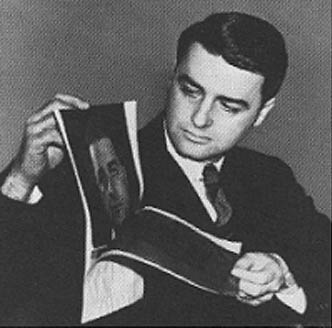
Edwin Herbert Land
(1906 - 1991)
Edwin Herbert Land (May 12, 1906 – March 1, 1991) was an American scientist and inventor. Among other things, he invented inexpensive filters for polarizing light, instant polaroid photography, and his retinex theory of color vision.
Early years
Born in Bridgeport, Connecticut to Harry and Helen Land, he studied chemistry at Harvard. While still a freshman, he invented the first inexpensive filters capable of polarizing light. Edwin Land did not finish his studies, but instead set up the Land-Wheelwright Laboratories in 1932 together with his Harvard physics instructor.
Land then went on to establish the Polaroid Corporation in Boston in 1937 to further develop and produce the sheet polarizers under the Polaroid trademark. The initial major application was for sunglasses and science, but it has found many applications, for instance as an important component of LCDs. During World War II, he worked on military tasks developing dark-adaptation goggles, and target finders. On February 21, 1947, Edwin Land demonstrated an instant image camera and associated film. Called the Land Camera, it was in commercial sale less than two years later. It's said that he invented the camera because his daughter complained it took too long to develop film.
Later years
In the 1950s, Edwin Land's team helped design the optics of the revolutionary Lockheed U-2 spy plane. Also in this decade, Land first discovered a two-color system for projecting the entire spectrum of hues with only two colors of projecting light (he later found more specifically that one could achieve the same effect using very narrow bands of 500nm and 557nm light). Some of this was written up later in the 1970s with his Retinex theory. In 1957 Harvard University awarded him an honorary doctorate. Later Edwin Land Blvd. a street in Cambridge, MA was named in his memory. The street forms the beginning of Memorial Drive, where the Polaroid company building was located.
In the early 1970s, he attempted to explain the previously known phenomenon of color constancy with his Retinex theory of color vision. His popular demonstrations of color constancy raised much interest in the concept. Land however failed to cite earlier work on the concept and was later criticized for that. In his retirement years, he founded the Rowland Institute for Science. Edwin Herbert Land died on March 1, 1991 in Cambridge, Massachusetts at the age of 82.
He received the Medal of Freedom, the highest award given to a U.S. citizen, for his work. He had over 500 patents, standing second to Thomas Edison.
Courtesy of:
http://en.wikipedia.org/wiki/Edwin_Land